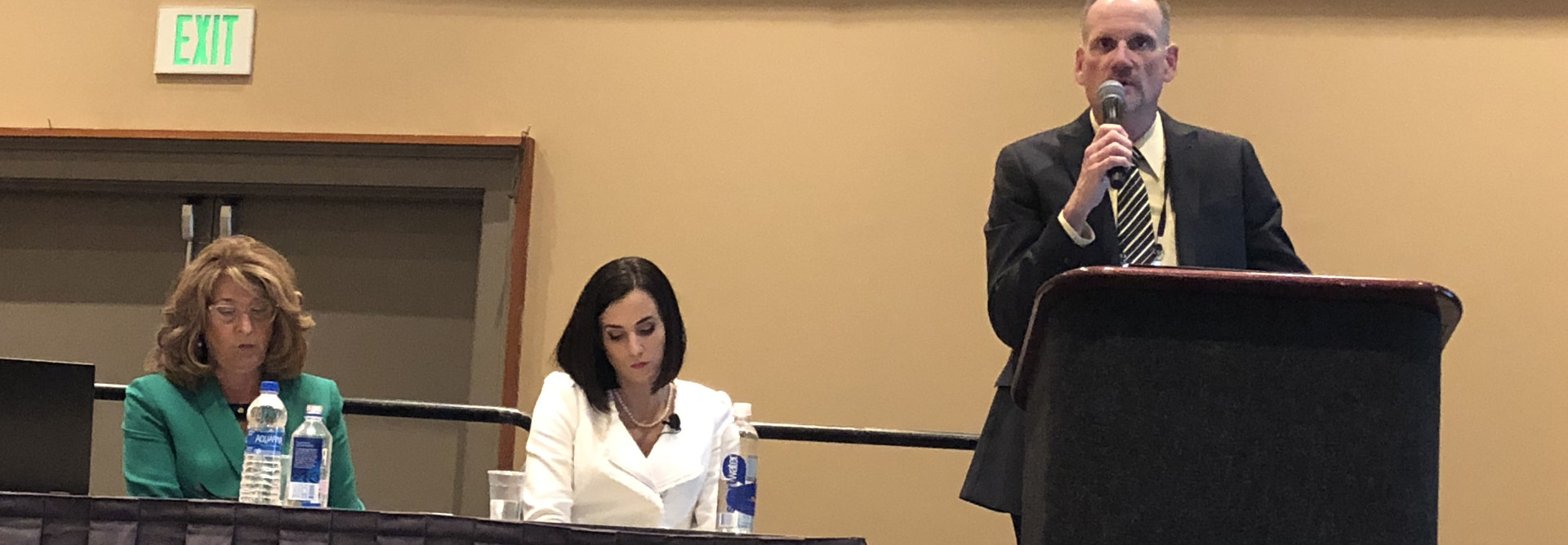LeadingAge 2018: IT Upgrades, Planning Boost Senior Living Disaster Response
Prior to 2016, Lifespace Communities didn’t have a cohesive disaster recovery plan, Vice President of IT John Couture said.
While each of the Des Moines, Iowa-based organization’s 12 senior living communities — including five in the state of Florida — had their own separate strategies in place, there was no centralized plan, and no collaboration with one another.
JOIN THE CONVERSATION: Follow @CDW_Healthcare on Twitter for continued LeadingAge 2018 coverage!
“There wasn’t a lot of leveraging across communities,” Couture said Sunday at the LeadingAge 2018 conference in Philadelphia. “There was no coordination from the home office, no periodic briefings to assess the situation to make recommendations.”
From an IT perspective, there was no redundant connectivity, Couture added. If their fiber was cut, there was no failover, he said, making the community very isolated.
“They were on an island, and they couldn’t reach any of their cloud-based or Software as a Service applications,” Couture said. “Most of our environment is cloud-based applications.”
All of that proved particularly challenging during Hurricane Matthew.
A Mixed Disaster Recovery Response to Hurricane Matthew
The storm, which ravaged much of the southeast U.S. in September 2016 — including Florida, Georgia and the Carolinas — was a turning point of sorts for Lifespace, Senior Vice President of Operations Ann Walsh said. About half of the organization’s 4,300 residents are in Florida.
“Every one of our communities had plans, but we weren’t quite as integrated a system as we could be,” said Walsh, who added that while the company was able to use its website and Facebook during the storm, it lacked a consistent phone system. “What we struggled with was whether we were going to shelter in place or evacuate. We kind of had a mix here.”
Walsh also said there was a lot of miscommunication between the city of Juno Beach and The Waterford community, which ultimately resulted in a late partial evacuation. Meanwhile, at its Harbour’s Edge community in Delray Beach, Fla., a mixed approach that included voluntary evacuation and sheltering in place was conducted, which proved confusing to residents and their family members.
Boost Preparation with Infrastructure and Collaboration Tools
Lifespace leadership aimed to learn from its Hurricane Matthew experience, Walsh and Couture said. It created more clearly defined community emergency and incident command teams that leveraged both its corporate executive team, as well as ground-level leadership to provide a robust yet organized response. That helped it to improve its response to Hurricane Irma in August and September of 2017.
From an IT perspective, in particular, the organization put an emphasis on ensuring satellite phones were in place and tested at its communities, Couture said. It also recently upgraded its multiprotocol label switching network, which provides connectivity between its data center and all 12 of its communities.
Lifespace is also in the process of finishing an upgrade of its aging phone system to a Cisco Voice over Internet Protocol system. The VoIP system integrates with the organization’s Cisco Jabber instant messenger system, as well as with its videoconferencing technology.
“If I’ve had one soapbox since I got to Lifespace, it’s around standardization. When I came in, we had 12 communities doing 12 things 12 different ways. They were buying hardware and software out on their own, we weren’t leveraging each other — our size, our economies of scale.”
Additionally, the organization is looking to deploy a mass text messaging alert system by the end of this year that will send updated messages to family members and caregivers about residents in the event of an emergency.
4 Tips for Healthcare Orgs to Prepare for Hurricane Season
Lifespace Vice President of IT John Couture says senior living organizations should take these steps when battening down the hatches in preparation for hurricane season:
- Make sure satellite phones are on hand and tested well in advance.
- Make sure the unlimited power supply is in place.
- Create contact and personnel lists and make sure all team members who need cell phones have them.
Make paper copies of all resident electronic health records. “When all else fails, there’s paper,” he says.
Keep this page bookmarked for articles from the event. Follow us on Twitter @CDW_Healthcare, or the official LeadingAge Twitter account, @LeadingAge, and join the conversation using the hashtag #LeadingAge18.









